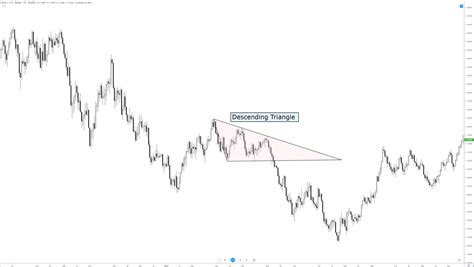The Future of Finance: A Guide to Cryptocurrencies, Risk Assessment, Continuity Models, and Digital Asset Management
As the world becomes increasingly digital, the financial industry is undergoing a significant transformation. One of the most exciting developments in this space is the emergence of cryptocurrencies, digital assets that can be bought, sold, and traded like traditional currencies. However, investing in cryptocurrencies comes with its own set of risks, so it’s essential to conduct a thorough risk assessment before getting involved.
In this article, we’ll dive into the world of cryptocurrency trading and explore key concepts like continuation patterns, risk assessment, and digital asset management. We’ll also explore how these principles can help investors navigate the complexities of investing in cryptocurrencies.
What is a cryptocurrency?
Cryptocurrencies are digital or virtual currencies that use cryptography for security and are decentralized, meaning they are not controlled by any government or financial institution. The most well-known cryptocurrencies include Bitcoin (BTC), Ethereum (ETH), and Litecoin (LTC). They operate independently of a network of computers and use complex mathematical algorithms to secure transactions and control the creation of new units.
Continuation Patterns
In technical analysis, continuation patterns are used to identify the direction of price movement. These patterns involve the re-emergence of an initial trend after a period of consolidation or reversal. In cryptocurrencies, continuation patterns can be useful for identifying potential buying or selling opportunities.
Some common continuation patterns include:
- Head and Shoulders (H&S): A classic pattern in which a head and shoulders form as the price moves away from a neckline.
- Inverted Head and Shoulders: Same pattern, but with a more pronounced top.
- Inverted Head and Shoulders: Similar pattern, but with a downward trend.
Risk Assessment
As with any investment, risk assessment is crucial when investing in cryptocurrencies. Cryptocurrencies are known for their high volatility, making them susceptible to large price swings. Investors must be prepared to handle potentially significant losses or gains.
When assessing the risks of trading cryptocurrencies:
- Volatility: Cryptocurrencies can experience sudden and extreme price movements.
- Liquidity: Trading cryptocurrencies can be challenging due to limited liquidity.
- Regulatory Uncertainty: Governments and regulators may introduce new rules that affect market sentiment.
- Security Concerns: Investors must ensure the safety of their assets and funds.
Digital Asset Management
Digital Asset Management (DAM) refers to the process of managing and tracking digital assets such as cryptocurrencies. DAM platforms provide investors with a comprehensive view of their portfolios, allowing them to track performance, manage risk, and make informed decisions.
Key features of DAM platforms include:
- Portfolio Monitoring: See the performance of your portfolio in real time.
- Risk Analysis: Identify potential risks and monitor market changes.
- Security Measures: Ensure the safety of your assets and funds.
- Tax Optimization: Take advantage of tax-advantaged strategies to minimize losses.
Best Practices for Cryptocurrency Investors
To successfully navigate the world of cryptocurrencies:
- Educate Yourself

: Keep learning about markets, trends, and technical analysis.
- Set clear goals: Define your investment objectives and risk tolerance.
- Diversify: Spread your investments across different asset classes to minimize exposure to a specific market.
- Monitor market conditions: Keep track of market news, regulatory changes, and economic indicators.
5.